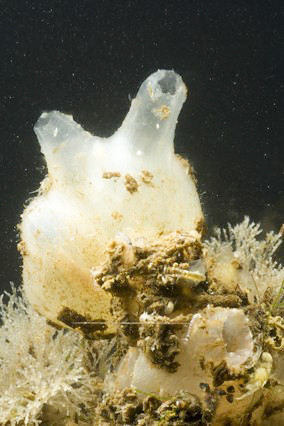Sea Squirt
Molgula manhattensis
The sea squirt is a marine invertebrae with a rounded, leathery body and two short siphons. It lives on reefs, pilings and other hard surfaces in the shallow waters of the middle and lower Chesapeake Bay.

